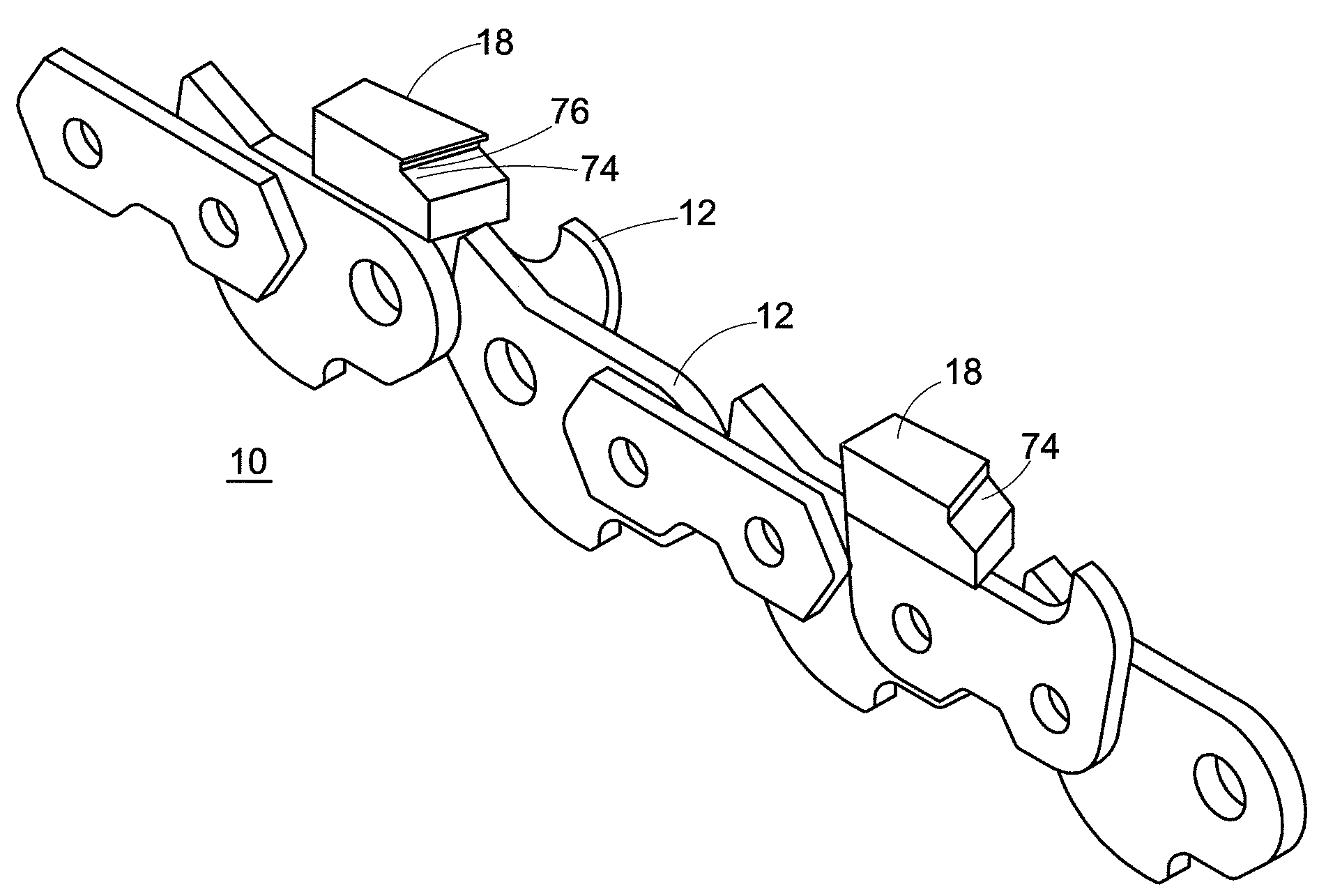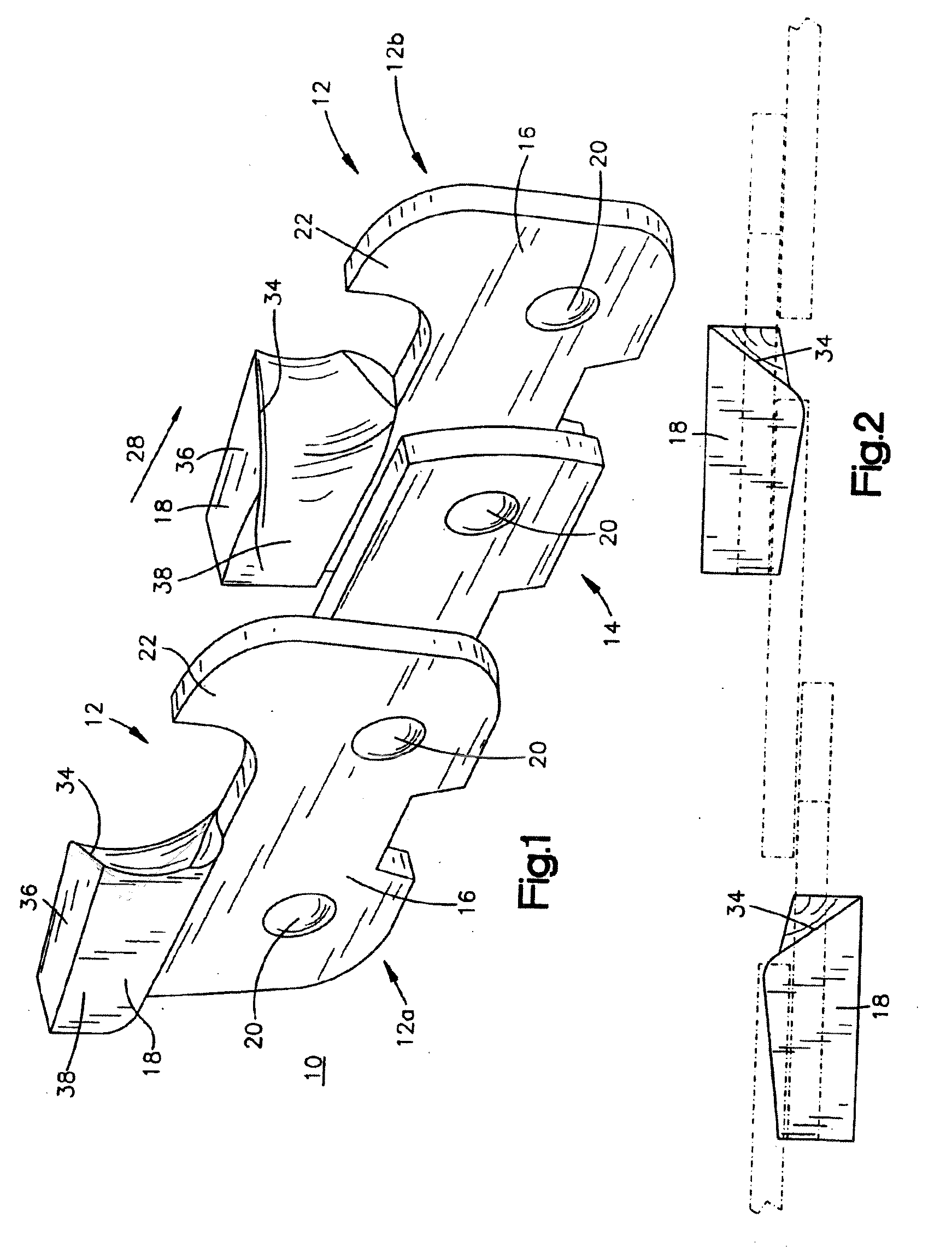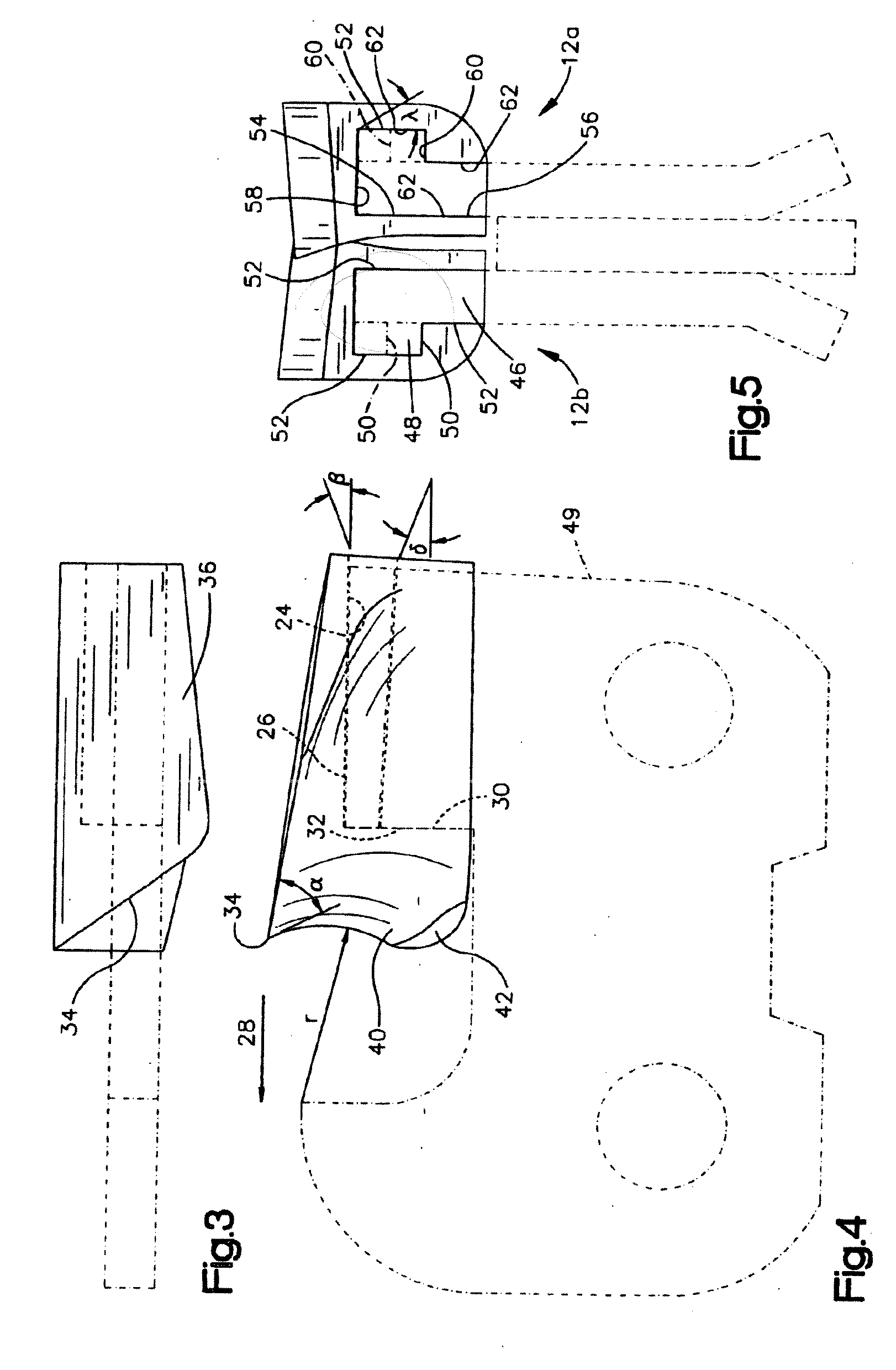Wood cutting saw chain and replaceable cutting members
- Summary
- Abstract
- Description
- Claims
- Application Information
AI Technical Summary
Benefits of technology
Problems solved by technology
Method used
Image
Examples
Embodiment Construction
[0031]Turning now to the drawings, the inventive saw chain portion 10 includes a plurality of links including cutting links 12 and connecting links or tie-straps 14 located between cutting links, which pivotally connect the cutting links and drive links (not shown) together in a well known manner. The cutting links or cutters 12 each comprise a holder or base member 16 pivotally connected at each end to the connecting links and quick change cutting members 18 connected to the holders. The cutting links are designed so as to alternate right and left handed with regard to the cutting edge (12a, 12b, respectively, in FIGS. 1 and 5) such that they are a mirror image of one another relative to a plane in which the connecting links reside. Rivets 20 pivotally fasten the saw chain links together in a well known manner. The function of the cutters and the purpose of their design is to cut wood fibers. Those skilled in the art will appreciate in view of this disclosure that a complete saw ch...
PUM
| Property | Measurement | Unit |
|---|---|---|
| Angle | aaaaa | aaaaa |
| Angle | aaaaa | aaaaa |
Abstract
Description
Claims
Application Information
 Login to View More
Login to View More - R&D
- Intellectual Property
- Life Sciences
- Materials
- Tech Scout
- Unparalleled Data Quality
- Higher Quality Content
- 60% Fewer Hallucinations
Browse by: Latest US Patents, China's latest patents, Technical Efficacy Thesaurus, Application Domain, Technology Topic, Popular Technical Reports.
© 2025 PatSnap. All rights reserved.Legal|Privacy policy|Modern Slavery Act Transparency Statement|Sitemap|About US| Contact US: help@patsnap.com



